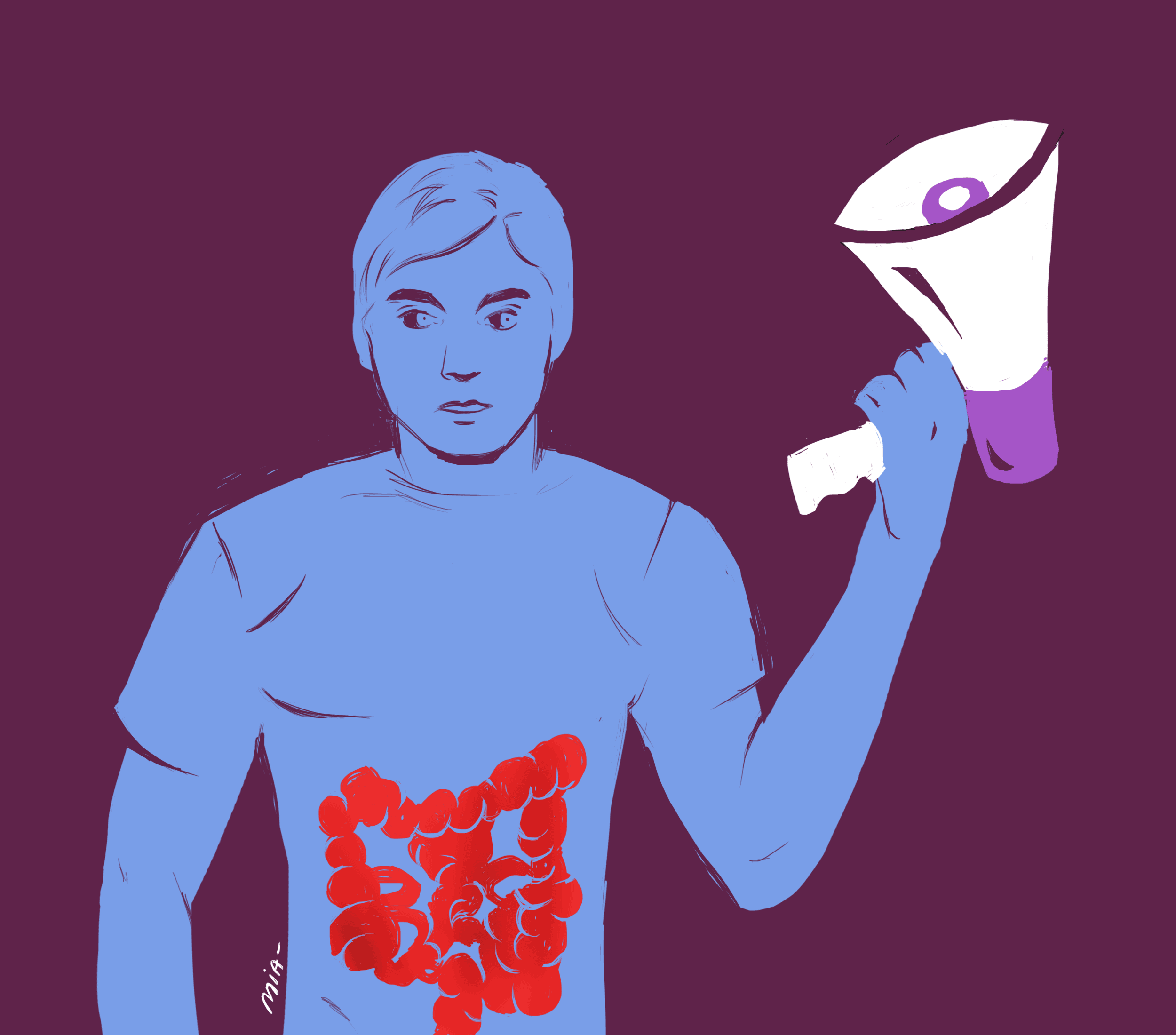I hadn’t heard of Crohn’s disease or ulcerative colitis until I was diagnosed with it myself.
November marks Crohn’s and Colitis Awareness Month, and as of 2012, approximately 233,000 Canadians lived with inflammatory bowel diseases (IBDs), of which Crohn’s and ulcerative colitis are the principal types. Canada also has one of the highest rates of this disease in the world, since they tend to affect individuals living in higher latitudes.
IBDs are a group of conditions characterized by chronic inflammation of the gastrointestinal (GI) tract. They include Crohn’s disease, ulcerative colitis, and sometimes indeterminate colitis. Generally, symptoms of IBDs stem from the body’s inability to digest food, absorb nutrients, and eliminate waste, which results in symptoms such as abdominal pain, cramping, and fatigue.
Crohn’s disease presents itself as patchy inflammation anywhere in the GI tract, and sometimes the deeper intestinal lining. Ulcerative colitis is characterized by chronic inflammation and ulcers in the large intestine and rectum. Indeterminate colitis refers to an unclear cause of inflammation, and could be either Crohn’s disease or ulcerative colitis.
While researchers have not been able to determine a single cause of IBDs, those with a family history of IBDs are more susceptible to them. According to the Crohn’s and Colitis Foundation of America, between five and 20 per cent of people affected have an immediate family member who is also affected. This statistic tends to be higher for individuals with Crohn’s disease.
Almost 70 per cent of patients with Crohn’s disease require surgery at some point, also making it an expensive disease. In fact, the Canadian Journal of Gastroenterology reports that treating IBDs costs about $12,000 per patient.
With over 10,000 new cases every year — making it twice as common as Parkinson’s disease or multiple sclerosis — especially with an increased rate in children, Crohn’s and colitis diseases have become a national and provincial health priority. Several studies and research projects are underway to determine the pathology of IBDs and help patients, especially those in underserved regions, manage these diseases.
In 2004, Dr. Katherine Siminovitch led a group of researchers at the Samuel Lunenfeld Research Institute at Mount Sinai Hospital to isolate the gene that predisposes people to Crohn’s disease. This gene, which produces proteins, regulates how substances enter and exit cells. For people with Crohn’s disease, the proteins malfunction and allow toxins to enter cells.
In addition, U of T professor Kenneth Croitoru was the lead researcher on a study examining the effects of family history on gut microbiome, especially in IBDs. Croitoru also leads the GEM Project — a major international study involving U of T and the Sinai Health System — to determine the cause of Crohn’s disease.
U of T professor Dr. Geoffrey Nguyen also leads an internationally-recognized research collaboration with Crohn’s and Colitis Canada known as Promoting Access and Care through Centres of Excellence. This project aims to identify geographic regions with Crohn’s and ulcerative colitis patients that are underserviced. Nguyen uses telemedicine to serve patients in remote communities.
Outreach groups, like Crohn’s and Colitis Canada, the only national, volunteer-based charity and one of the top two health charity funders of Crohn’s and colitis research in the world, have established several initiatives to raise awareness for these diseases. These include the biannual national education event, the “Gutsy Learning Series,” that explores different facets of IBDs to educate patients and their families. As well, the app GoHere was launched to provide a comprehensive list and map of accessible washrooms around the city for people living with Crohn’s and colitis.
Disclosure: Jordan LoMonaco is a volunteer with Crohn’s and Colitis Canada.


